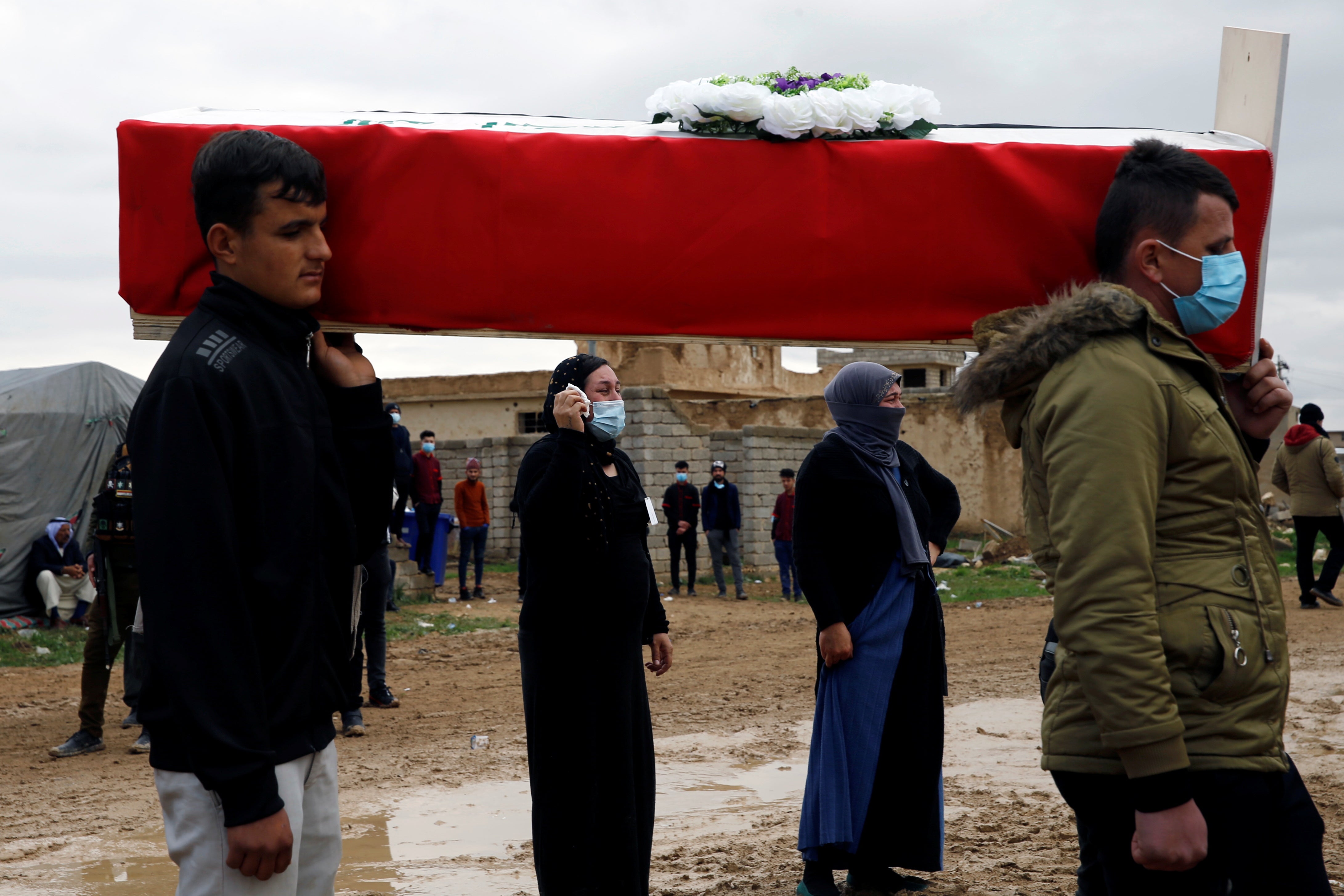‘The beginning of justice’: Yazidis bury hundreds slaughtered by ISIS
More than 100 victims of the Islamic State were buried after bodies recovered from a mass grave

Your support helps us to tell the story
From reproductive rights to climate change to Big Tech, The Independent is on the ground when the story is developing. Whether it's investigating the financials of Elon Musk's pro-Trump PAC or producing our latest documentary, 'The A Word', which shines a light on the American women fighting for reproductive rights, we know how important it is to parse out the facts from the messaging.
At such a critical moment in US history, we need reporters on the ground. Your donation allows us to keep sending journalists to speak to both sides of the story.
The Independent is trusted by Americans across the entire political spectrum. And unlike many other quality news outlets, we choose not to lock Americans out of our reporting and analysis with paywalls. We believe quality journalism should be available to everyone, paid for by those who can afford it.
Your support makes all the difference.Members of the Yazidi ethnic ethnicity group in Iraq were able to finally bury more than 100 victims of the Islamic State, over a year after their remains were exhumed from mass graves, in a moving ceremony they said was “the beginning of justice”.
It comes amid reports that Syrian authorities may have found the body of top archaeologist Khaled al-Assad, 82, who was also killed by Isis but in Syria in 2015 while he tried to protect the ancient city of Palmyra.
Over the weekend in the Iraqi village of Kocho, south Sinjar, the remains of 104 Yazidis rounded up in 2014, shot and dumped in mass graves were finally laid to rest.
Among the dead was the two brothers of Nobel Peace Prize Laureate Nadia Murad, who survived enslavement by the brutal group.
She said on Monday that six years after the Isis genocide of the Yazidis in Sinjar, burying her brothers was the start of seeking justice.
“My community of Kocho was able to lay over 100 of our loved ones to rest,” she wrote on Twitter.
“This is just the beginning of justice for Yazidis. Thousands of families still wait for the identification and burial of their loved ones,” she added.
In a statement released in the days before she said that there is an “acute need” to identify the rest of the remains that have been exhumed for mass graves including her mother.
“There are dozens of mass graves in Sinjar that still await exhumation. Exhumations and burials for all Yazidi victims of genocide should be expedited out of respect for the deceased and survivors.”
It followed a state funeral for the 104 victims held last week at the tomb of the unknown soldier in Baghdad which was attended by Prime Minister Mustafa al-Kadhimi and President Barham Saleh.
Separately on Monday, Syrian state media reported that the body of Khaled al-Asaad, the former head of Palmyra was thought to be among three bodies discovered in Khaloul, east of the archaeological site.
Mr Asaad, the site’s former director, was beheaded by Isis militants after he chose to stay and protect the 2,000-year-old city which was occupied twice by the militant group between 2015 and 2017.
The authorities still need to confirm the identity of the bodies through DNA tests.
Tens of thousands of people were enslaved and killed during Isis’s brutal reign of terror which started in 2014 when they first swept control of territory in Syria and Iraq.
The UN has since declared that Isis’s actions amounted to the crime of genocide against the Yazidis as they sought to destroy the religious community of 400,000 people through killings, sexual slavery and other crimes.
The Yazidi community is a Kurdish minority whose faith combines elements of Christianity, Zoroastrianism and Islam.
Isis, which considers them devil-worshippers, killed and abducted thousands of Yazidis in its attack on their Mount Sinjar heartland. It held sway over huge areas of Iraq and Syria.
Although Isis was driven from the last part of their land in 2019 by US-led coalition forces, the UN estimates more than 10,000 militants remain active in Syria and Iraq through small cells which continue deadly attacks in both countries.
According to Ms Murad, 2,800 women and children remain in their captivity.
Mr al-Asaad was also one of their victims. His brutal murder in 2015 shocked the world.
Nicknamed Mr Palmyra, Mr Al-Asaad had dedicated nearly half a century of his life to the Unesco World Heritage Site, being director of Palmyra’s antiquities and museums between 1963 and 2003.
His three sons and his son-in-law who are also archaeologists archaeologist managed to escape to Damascus with valuable artefacts, but Mr Asaad vowed not to leave his home.
Isis later blew up parts of the ancient city.



Join our commenting forum
Join thought-provoking conversations, follow other Independent readers and see their replies
1Comments